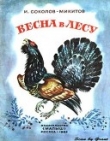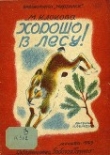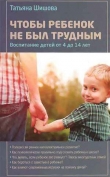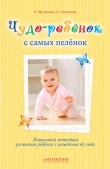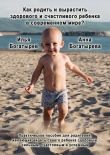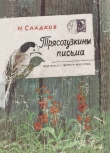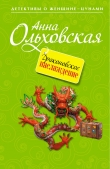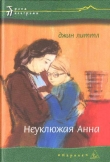
Текст книги "Последний ребенок в лесу"
Автор книги: Ричард Лоув
Жанр:
Психология
сообщить о нарушении
Текущая страница: 22 (всего у книги 23 страниц)
Ясное представление позволяет обрести большую силу. Ощущается острая потребность в контролируемых экспериментальных изучениях, таких, которые проводятся в университете Иллинойса Тейлором и Куо. Подобные исследования показывают, что природа не просто способствует здоровому развитию ребенка, но и более эффективна, нежели иные способы, которыми ее пытаются заменить. Хотя проведение подобных исследований требует немалых затрат, знания, которые они дают, могут оказать огромное влияние в борьбе за сохранение и преумножение территорий с естественной природной средой, доступной для детей и для всех нас.
Причины для оптимизма
В штатах Западной Вирджинии и Кентукки до сих пор уголь «правит бал», разрывающие горы машины опускают линию горизонта. Разрушение горных вершин и заполнение долин вследствие открытой разработки привели к «обезглавливанию» свыше тысячи квадратных километров горных районов; оказались погребенными около полутора тысяч километров речек, распались сообщества людей. Угольные компании продолжают утверждать, что подобные горные разработки жизненно необходимы для местной и национальной экономики, однако многие жители Западной Вирджинии и Кентукки думают иначе. Подобные работы по добыче угля часто оставляют после себя открытые плато, подобные лунным. Угольная суспензия, состоящая из частиц пустой породы и химикатов, используемых в угледобывающей промышленности, смешивается с дождем и попадает в водохранилища.
11 октября 2000 года одно из таких водохранилищ, около Инеза, штат Кентукки, разрушилось, вылив около 1 млрд л угольной суспензии и сточных вод (что более чем в двадцать раз превышает количество нефти, вылившейся из нефтяного танкера «Эксон Валдез»), что привело к загрязнению и уничтожению водной флоры и фауны более чем на ста километрах рек и ручьев Западной Вирджинии и Кентукки. Мой друг Джанет Фаут, один из лидеров Союза по охране долины Огайо, борется против разрушения горных вершин. Она полна надежд на будущее в союзе с природой – и благодаря успеху последних мероприятий их движения и из-за свидетельств серьезной озабоченности (выраженной и многими людьми в этой книге) по поводу отсутствия связи детей с природой. Она обращает внимание на тех ее знакомых, «которые не боятся немного запачкать в грязи ботинки – тех новых людей, что, следуя по стопам первопроходцев, предпочли идти легкой поступью по собственному небольшому участку земли». Они живут в сельской местности, там же воспитывают и обучают своих детей. «Дети познают жизненные премудрости потому, что от этого зависит их собственное существование. Это не то же самое, что ходить время от времени в лес с приятелями, это – сама их жизнь. Детей учат заботиться о земле так, как если бы от этого зависела сама их жизнь на ней, что, в общем-то, на самом деле так».
Наиболее отрадным для нее является тот факт, что ее дочь, как многие представители ее поколения, связана с миром, «о чем раньше можно было только мечтать. Молодые люди выходят далеко за пределы этой страны, перед ними не только предстают другие культуры, но они еще видят, как расточительный стиль жизни Соединенных Штатов наносит ущерб жизни и за их пределами. Полученный на пике юношеского идеализма опыт из первых рук, несомненно, зажжет энтузиазмом новых лидеров, которые не только вступят в борьбу за сохранение мира естественной природы, но и будут стоять за справедливость для всех людей.
Непосредственный контакт с миром природы и чтение биографий людей, которые меняют жизнь, способствуют росту моего самосознания как в социальной сфере, так и в отношении к окружающей среде, и я уверена, что за этим самосознанием и стоит тот самый душевный пыл, который поможет нам спасти Землю, а для людей, живущих на ней, послужит источником энергии. Моя дочь может связаться напрямую со сверстником в Буэнос-Айресе или Катманду через Интернет безо всяких посредников. Она может узнать правду непосредственно из первых уст за считанные секунды. Это вселяет в меня надежду».
Я надеюсь, что Джанет права, однако считаю, что оптимизм имеет под собой почву только при условии значительного расширения социального движения за установление связи между нашими детьми и миром природы, такого движения, которое пойдет значительно дальше природоохранных действий, осуществляющихся сейчас. Пока Джанет борется против разрушителей гор в Западной Вирджинии, бульдозеристы иного рода принимаются за работу у меня за спиной. Огромные гудящие грейдеры сглаживают естественный рельеф земли. Это разворачивается сам Сан-Диего. В соответствии с большими строительными проектами несколькими бульдозерами обычно разрывается свыше девяноста тысяч кубических метров земли в день. Если сложить все эти кубометры земли в башню, то она будет возвышаться более чем на восемьдесят километров. И это работа одного дня, работа по плановому развитию города. Подобное изменение ландшафта является первым этапом создания нового городского участка, в котором все выравнивается и устанавливается руками человека. Пока не будет сделан иной выбор, именно такими будут районы, в которых вырастут новые поколения американцев.
Пока я собирал материал для написания этой книги, я много разговаривал со студентами колледжей, и эти разговоры вселили в меня надежду. Когда речь заходила о здоровье – физическом, психическом, духовном – и о том, какую роль играет здесь природа, тон разговора менялся; вопрос, который часто поначалу казался фаталистическим, интеллектуальная дискуссия о дыре в озоновом слое быстро переводила в сферу личных интересов. Некоторые из побеседовавших со мной студентов позднее признавались мне, что раньше никогда не задумывались о судьбе окружающей среды в таком личном и глубоком смысле. Многие затем написали мне, что разговоры с одноклассниками и детьми о природе их очень тронули. Пусть исподволь, но находящееся в спячке семя природы прорастает, стоит лишь немного его полить.
Возможно, через какое-то время для этих молодых людей дело охраны природы станет целью их жизни и они посвятят ему все свои умения. Сделают они это не по идеологическим мотивам и даже не из-за проблемы выживания. Они поступят так потому, что в этом будет заключена для них та особая радость, которую они в один прекрасный день смогут разделить со своими детьми, как смогут это сделать и многие из нас – если действовать незамедлительно.
23. Пока все продолжается
Я вижу это почти как сейчас…
Мальчики еще маленькие. Мы остановились в трехкомнатном домике около реки Оуэнс[87] на восточном склоне Сьерры. Мы слышим, как дует с гор октябрьский ветер. Джейсон и Мэтью лежат в своих кроватках, и я читаю им из детской книжки «Львиная гончая» (Lion Hound), написан ной Джимом Кьелгаардом и вышедшей в 1955 году. Эта книга осталась у меня со времен моей юности. Я читаю: «Джонни Торрингтон проснулся через два часа после того, как забрезжил осенний рассвет.
Пять роскошных минут он потягивался в теплой кровати, подтянув к подбородку одеяло и прислушиваясь к ветру, врывавшемуся через открытое окно спальни. Хотя ветер был не холоднее, чем вчера, в нем, казалось, появилось что-то особенное, то, чего вчера не было». Глаза моего младшего сына, увеличенные большими круглыми очками, еще больше рас ширились. Джейсон, старший, засунул лицо под одеяло, где он, бесспорно, видел ходившего кругами льва.
На следующее утро, после того как Мэтью с мамой уехали в город, мы с Джейсоном пошли ловить в Оуэнсе рыбу на спиннинг. Пока мы ловили, перед нашими глазами, не прилагая ни малейших усилий, взлетела огромная голубая цапля, и я вспомнил другую цаплю, поднявшуюся над прудом среди леса много лет тому назад, и почувствовал тот же благоговейный трепет, что испытал тогда. Я видел, как мой сын вскинул удилище и леска мелькнула у него над головой. Под тополями он твердо сказал мне, что хочет сам насаживать наживку на крючок. И я понял, что на реке нам надо держаться на расстоянии.
Когда стало слишком темно, чтобы смотреть сквозь воду, мы пошли домой в холодной мгле. Мы услышали шум в кустах и, подняв голову, увидели семерых смотревших на нас оленей. Их головы и длинные уши вырисовывались силуэтами на темно-лавандовом небе. В кустах мы услышали и другие звуки. Мы дошли до гравийной дороги, нас догнал Олдсмобиль, и пожилой человек, опустив стекло, спросил:
– Вас подвезти или вам недалеко?
– Нам недалеко, – сказал я.
Мы видели, что в нашем домике уже горит свет. Мэтью с мамой уже ждали, и сегодня вечером я прочту еще несколько страниц «Львиной гончей» перед тем, как дети заснут.
Джейсон теперь настоящий мужчина. Прошлой весной он окончил колледж. Мэттью осталось два года учиться в средней школе. Меня охватывает чувство гордости и облегчения оттого, что они выросли хорошими людьми, и глубокая грусть оттого, что годы, когда я был отцом маленьких детей, ушли, осталась только память о них. И я ей благодарен. Время, которое я провел со своими детьми среди природы, останется среди самых важных воспоминаний и моих, и, как я надеюсь, моих детей.
У нас не так уж много времени, чтобы передать детям нашу любовь к этой Земле, чтобы рассказать им наши истории. Но это то самое время, когда мир обретает целостность. В моих воспоминаниях о детях приключения, которые мы пережили среди природы, будут жить вечно. И мои дети расскажут о них своим детям.
Источники
A. Hattie, Herbert W. Marsh, James T. Neill и Garry E. Richards, «Adventure Education and Outward Bound», Review of Educational Research 67 (1997): 43–87.
Alan Ewert and Leo McAvoy, «The Effects of Wilderness Settings on Organized Groups», Therapeutic Recreation Journal 22, номер 1 (1987): 53–69.
Andrea Faber Taylor и Frances Е. Kuo.Из неопубликованного, используется с разрешения авторов.
Andrea Faber Taylor, Angela Wiley, Frances Kuo, William Sullivan, «Growing Up in the Inner City: Green Spaces as Places to Grow», Environment andBehavoir 30, номер 1 (1998); 3–27.
Andrea Faber Taylor, Frances E. Kuo и William C. Sullivan, «Coping with ADD: The Surprising Connection to Green Play Settings», Environment and Behavior 33, номер 1 (январь, 2001): 54–77.
Andrea Faber Taylor, Frances E. Kuo и William C. Sullivan, «Views of Nature and Self-Discipline: Evidence from Inner City Children», Journal of Environmental Psycology (февраль, 2002): 46–64.
Andrea L. Gullo, Unna I. Lassiter, and Jennifei Wolch, «The Cougar’s Tale», Animal Geographic Place, Politics, and Identity in the Nature-Culture Borderlands, редактор Jennifer Wolch и Jody Emel (London, New York: Verso Books, 1998).
Barbara Vobejda, «Agriculture No Longer Counts», Washington Post, октябрь, 9, 1993.
Beardsley, «Kiss Nature Goodbye, Marketing the Great Outdoors», Harvard Design Magazine, номер 10 (зима/весна, 2000).
Ben Breedlove, интервью online, «Е Design Online interview», сентябрь, 24, 1996, http// www.state.fl.us/ fdi/edesign news 9609/breedluv.htm.
Berenson, Sketch for a Self-Portrait (Toronto: Panthe6n Books, 1949), 18.
Brands, The First American, 18.
Churchman, «How to Turn Kids Green», 28.
CIVITAS, Vancouver, B.C. http//www.civitasdesign.com/newcomm.html.
Clay, «Green Is Good for You».
Colleen Cordes и Edward Miller, eds., «Fools Gold: A Critical Look at Children and Computers» (a Web-published report by Alliance for Childhood, 2001). За более подробной информацией обращайтесь на http//www.allianceforchildhood.net/projects/computers/computers – reports – fools – gold – download.htm.
Daniel С. Beard, Shelters, Shacks and Shanties (Berkeley, CA: Ten Speed Press, 1992), xv.
David Brooks, «The Organization Kid», Atlantic Monthly, апрель, 2001, 40.
David Orr, «What is Education For? Six Myths about the Foundation of Modern Education, and Six New Principles to Replace Them», Context: A Quarterly of Human Sustainable Culture, Context Institute (зима, 1991): 52.
David Orr, Earth in Mind: On Education, Environment, and the Human Prospect (Washington, D.C.: Island Press, 1994).
David Sobel, Beyond Ecophobia: Reclaiming the Heart in Nature Education, Orion Society Nature Literacy Series, том 1 (Great Barrington, MA: Orion Society, 1996).
David Sobel, Place-Based Education: Connecting Classrooms and Communities (Great Barrington, MA: The Orion Society and the Myrin Institute, 2004).
Debera Carlton Harrell, «Away from the Tube and into Nature, Children Find a New World», Seattle Post-Intelligence, апрель, 5, 2002.
Deborah Churchman, «How to Turn Kids Green; Reinstilling the Love for Nature Among Children», American Forests 98, номер 9–10 (сентябрь, 1992): 28.
Dirk Johnson, «The Great Plains: While Still Bleak, Offer a Chance to the Few», New York Times, декабрь 12, 1993, раздел 1, стр. 1.
E. О. Wilson, Naturalist (New York: Warner Books, 1994), 56.
Edith Cobb, The Ecology of Imagination in Childhood (New York: Columbia University Press, 1977).
Edmund Morris, The Rise of Theodore Roosevelt (New York: Putnam, 1979), 19.
Edward О. Wilson, Biophilia (Cambridge, МА: Harvard University Press, 1984).
Faber Taylor и Frances Kuo.Из неопубликованного, используется с разрешения авторов.
Frederick Jackson Turner, The
G. Davis, Amy М. Corbitt, Virginia M. Everton, Catherine A. Grano, Pamela A. Kiefner, Angela S. Wilson и Mark Gray, «Are Ball Pits the Playground for Potentially Harmful Bacteria?», Pediatric Nursing25, номер 2 (март, 1, 1999): 151.
G. Mitchell, «Change of Heartland», National Geographic, май, 2004.
George F. Will, The Greening of Chicago, Newsweek, август, 4, 2003, 64.
Gordon Orians and Judith Heerwagen, «Evolved Responses to Landscapes», в Jerome Barkow, Leda Cosmides и John Tooby (подред.), The Adapted Mind: Evolutionary Psychology and the Generation of Culture (Oxford: Oxford University Press, 1992), том 7, номер 1: 555–579.
Grahn, Fredrika Martensson, Bodil Lindblad, Paula Nilsson и Anna Ekman, Ute pa Dagis. StadLand, Nr. 145 (Outdoor daycare. City and country), Hasselholm, Sweden: Norra Skane Offset, 1997.
Gretel Н. Schueller, «Scientists, Religious Groups Come to the Aid of Nature», Environmental News Network, Knight Ridder/TribuneBusiness News, сентябрь, 3, 2001.
H. W. Brands, The First American: The Life and Times of Benjamin Franklin (New York: Doubleday, 2000), 17.
Het Groene Dak. Timothy Beatley, Green Urbanism: Learning from European Cities (Washington, D.C.: Island Press, 2000), 212.
Hoffman, Visions of Innocence: Spiritual and Inspirational Experiences of Childhood (Boston: Shambhala, 1992).
Howard Frumkin, «Beyond Toxicity: Human Health and the Natural Environment», AmericanJournal of Preventive Medicine (апрель, 2001): 234–240.
Howard Gardner, «Multiple Intelligences after Twenty Years», (документпредставленна American Educational Research Association, Chicago, Illinois, апрель, 2003). © Howard Gardner: Harvard Graduate School of Education, Cambridge, MA. http:// www.responsivemanagement.com.
Huttenmoser, «Children and Their Living Surroundings: Empirical Investigations into the Significance of Living Surrounds for the Everyday Life and Development of Children», Children Environments Quarterly 12 (1995): 403–413.
J. Evans, «Where Have All the Players Gone?» International Play Journal 3, номер 1 (1995): 3–19.
Joahn Beardsley, «Kiss Nature Goodbye», Harvard Design Magazine 10 (зима/весна, 2000).
John A. Hattie, Herbert W. Marsh, James T. Neil и Garry E. Richards. «Adventure Education and Outward Bound Out-of-Class Experiences That Make a Lasting Difference», Review of Educational Research (1997): 43–87.
John Balzar, True Nature. Author Jennifer Price Hopes City-Dwellers Will Learn to See, to Love and to Nurture What’s Wild and Wonderful in Their Midst, Los Angeles Times, май, 31, 2003.
John Berger, About Looking (New York: Pantheon Books, 1980), 20.
Joseph P. Lash, Eleanor and Franklin (New York: Signet Press, 1971), 64, 66.
Karen Malone и Paul J. Tranter, «School Grounds as Sites for Learning: Making the Most of Environmental Opportunities», Environmental Education Research 9, номер 3 (2003): 283–303.
Kathryn Kramer, «Writers on Writing», New York Times, декабрь, 30, 2002.
Kelley, «A Sight for Sensitive Ears: A New Generation of Audio Technology Is Opening Up the Wonders of Birding to the Visually Impaired – and the Sighted, Too», Audubon 104 (январь/февраль 2002): 76–81.
Kraut, Vicki Lundmark, Michael Patterson, Sara Kiesler, Tridas Mukopadhyay, и William Scherlis, «Internet Paradox: A Social Technology That Relates Social Involvement and Psychological Well-Being?», Amerikan Psychologist 53, номер 9 (сентябрь, 1998): 1017–1031.
Lezette Alvarez, «Suutarila Journal: Educators Flocking to Finland, Land of Literate Children», New York Times, апрель, 9, 2004.
Linda A. Johnson, «Behavior Drugs Top Kids’ Prescriptions», Associated Press, май 17, 2004.
Linda Batt, «All Hail Our Fair Feathered Friends: A Backyard Birdfeeder Makes Science Fun!» Mothering, январь/ февраль, 2000, 58.
Linda Chorice, «Nature Journaling – the Art of Seeing Nature», Missouri Conservationist, июль, 1997.
Linda Dong, Gladys Block, Shelly Mandel, «Activities Contributing to Total Energy Expenditure in the Union States: Results from the NHAPS Study», InternationalJournal of Behavioral Nutrition and Physical Activity 1, номер 4 (2004).
Lisa Kosian, «Exploring the Link Between Mind, Nature», Boston Globe, май, 30, 2002.
Louise Chawla, «Ecstatic Places», Children’s Environments Quarterly3, номер 4 (зима, 1986); и Louise Chawla «Life Pass into Effective Environmental Action», fournal of Environmental Education 31, номер 1 (1990): 15–26.
Louv, The Web of Life: Weaving the Values That Sustain Us (Berkeley, CA: Conari Press, 1996), 137.
M. Healey, «Early Television Exposure and Subsequent Attention Problems in Children», Pediatrics 113, номер 4 (апрель, 1, 2004): 917–918.
M. Sherer, «Why America Needs More City Parks and Open Space (San Francisco: Trust for Public Land, 2003). Смотрите на сайте http// tpl.org.
Margaret Lane, The Tale of Beartix Potter: A Biography (London: Penguin Books, 2001).
Mary Ann Kirkby, „Nature as Refuge in Children’s Environments“, Childrens Environments Quarterly 6, номер 1 (1989): 7–12.
Mary Rivkin, „The Schoolyatd Habitat Movement: What It Is and Why Children Need It“, Early Childhood Education Journal 25, номер 1 (1997).
Matt Richtel, „Nature, Brought to You by…“, New York Times, август, 11, 2002.
McAleer, Arthur С. Clarke: The Authorized Biography (Chicago: Contemporary Books, 1992), 4, 10.
McAvoy, „Outdoors for Everyone: Opportunities That Include People with Disabilities“, Parks and Recreation, National Recreation and Park Association 36, номер 8 (2001): 24.
Methylphenidate (A Background Paper), октябрь, 1995, Drug and Chemical Evaluation Section, Office of Diversion Control, Drug Enforcement Administration.
Michael Milstein, „Fewer Families Choose National Park Vacations“, The Oregonian, июнь, 15, 2003.
Mike Bowler, „То Play, or Not to Play“, Baltimore Sun, июнь 20, 2001, раздел 2B.
Mike Davis, The Ecology of Fear: Los Angeles and the Imagination of Disaster (New York: Henry Holt, 1998), 202.
Mike Snyder, „Sprawl Damages Our Health, CDC Says“, Houston Chronicle, ноябрь, 9, 2001, раздел A-45.
Nancy Seeger, „Greening Chicago“, Planning 68, номер 1 (январь, 1, 2002): 25.
Nancy Wellsи Gary Evans, Nearby Nature: A Buffer of Life Stress among Rural Children», Environment and Behavior 35 (2003): 311–330.
Nancy Zukewich, «Work, Parenthood and the Experience of Time Scarcity», Statistics Canada – Housing, Family and Social Statistics Division, номер 1, 1998.
Natural Resources Inventory Report, U.S. Departament of Agriculture, 2002.
Neil Baldwin, Edison: Inventing the Century (1995; переиздание, Chicago: University of Chicago Press, 2001), 18–19.
Norman Nie и Lutz Erbring, «Stanford Online Report», Stanford Institute for the Quantitative Study of Society, февраль, 16, 2000.
Patricia Meyer Spacks, Boredom: The Literary History of a State of Mind (Chicago: University of Chicago Press, 1995).
Patricia М. Gray, Bernie Krause, Jelle Atema, Roger Payne, Carol Krumhansl и Luis Baptista, «The Music of Nature and the Nature of Music», Science, январь, 5, 2001, 52.
Patrik Grahn, Fredrika Martensson, Bodil Lindblad, Paula Nilsson и Anna Ekman, Utepa Dagis, Stad Land, Nr. 145, (Outdoor daycare. City and country), Hasselholm, Sweden: Norra Skane Offset, 1997.
Paul K.Drayton, «The Importance of the Natural Sciences to Conservation», an American Society of Naturalists Symposium Paper, The American Naturalist (июнь, 2V, 2003): 1–13.
Paul К. Dayton and Enric Sala, «Natural History: The Sense of Wonder, Creativity, and Progress in Ecology», Scientia Marina (2001): 196–206.
Peter Н. Kahn, Jr., The Human Relationship with Nature (Cambridge, MA: MIT Press, 1999), 13, упоминается у R. S. Ulrich, «Biophilia, Biophobia, and Natural Landscapes», в S. R. Kellert и E. O. Wilson (подред.), The Biophilia Hypothesis (Washington, D.C.: Island Press, 1993), 73–137.
«Problem of the West», Atlantic Monthly, сентябрь, 1896.
Rachel Kaplan, Stephen Kaplan и Robert L. Ryan, «With People in Mind: Design and Management for Everyday Nature» (Washington, D. C.: Island Press, 1998).
Rebecca A. Clay, «Green is Good for You», Monitor on Psychology 32, номер 4 (апрель, 2001).
Richard J. Jackson and Chris Kochtitzky, «Creating a Healthy Environment: The Impact of the Built Environment on Public Health», Sprawl Watch Clearinghouse Monograph Series (Washington, D.C.: Sprawl Watch Clearinghouse, 2001).
Richard Louv, Childhood’s Future (Boston: Houghton Mifflin, 1990).
Richard Louv, Fly-Fishing far Sharks (New York: Simon & Schuster, 2000).
Richard Louv, The Web of Life. Weaving the Values That Sustain Us (Berkeley, CA: Conari Press, 1996).
Robert Michael Pyle, The Thunder Tree: Lessons from an Urban Wildland (New York: Houghton Mifflin, 1993), 147.
Robin С. Moore и Herb Н. Hong, Natural Learning: Creating Environments for Rediscovering Nature’s Way of Teaching (Berkeley, CA: MIG Communications, 1997).
Robin С. Moore, «The Need for Nature: A Childhood Right», Social Justice 24, номер 3 (1997): 203.
Roger. S. Ulrich, «Human Experiences with Architecture», Science, апрель, 1984.
Ronald Davis и Barry Pless, «BMJ Bans Accidents’: Accidents Are Not Unpredictable», British Medical Journal 322 (2001): 1320–1321.
Ronnie Durie, «An Interview with Howard Gardner», Mindshift Connection (Saint Paul, MN: Zephyr Press, 1996).
Sanford Gaster. «Urban Children’s Access to Their Neighborhoods: Changes Over Three Generations», Environment and Behavior (январь, 1991): 70–85.
Sharon Lovejoy, Sunflower Houses: Inspiration from the Garden – A Book for Children and Their Grown-JJps (New York: Workman, 2001). Подробнее об этом см.: http://www.rain.org/-philfear/sunflow-erhouse.html.
Simon Nicholson, «How Not to Cheat Children: The Theory of Loose Parts», Landscape Architecture 62, номер 1 (1971): 30–34.
Snyder, The Practice of the Wild (Washington, DC: Shoemaker & Hoard, 2004), 8.
Susan Herrington и Kenneth Studtmann, «Landscape Interventions: New Directions for the Design of Children’s Outdoor Play Environments», Landscape and Urban Planning 42, номер 2–4 (1998): 191–205.
Teodore Roszak, Psychology Today (январь/ февраль, 1996).
The Massachusetts Psychologist, http://www.masspsy.com (1999).
The US Youth Soccer Association, Richardson, Texas, http//www.usyouthsoccer.org.
Theodore Roszak, интервьюв Adbusters. Roszak являетсяавтором The Voice of Earth: An Exploration of Ecopsychology (New York: Simon & Schuster, 1993).
Theroux, California and Other States of Grace: A Memoir (New York: William Morrow, 1980), 55.
Thomas Delate, Alan J. Gelenberg, Valarie A. Simmons и Brenda R. Motheral, «Trends in the Use of Anitidepressants in National Sample of Commercially Insured Pediatric Patiens, 1998 to 2002», Psychiatric Services 55 (апрель, 2004): 387–391.
Tony Hillerman (подред.), The Spell of New Mexico (Albuquerque, NM: University of New Mexico Press, 1976), 29–30; цитируется no: Phoenix: The Posthumous Papers of D.H. Lawrence, ред. Edward D. McDonald (New York: Viking, 1978).
Victoria Stagg Elliott, «Think Beyond Drug Therapy for Treating ADHD», AMA News, апрель, 19, 2004.
Wallace Stegner, «Personality, Play, and a Sense of Place», Amicus Journal (renamed OnEarth), 1997.
Will Nixon, «Letting Nature Shape Childhood», Amicus Journal, National Resourses Defense Council, распространяется The Los Angeles Times Syndicate, December, 24, 1997.
Willett Kempton, James S. Boster, and Jennifer A. Hartley, Environmental Values in American Culture (Cambridge, MA: MIT Press, 1997).
William Symond, Wired Schools, Business Week, сентябрь, 25, 2000.
William В. Honachefsky, Ecologically Based Municipal Land Use Planning (Boca Raton, FL: Lewis Publishers, CRC Press, 1999).
Список рекомендуемой литературы
Что еще можно почитать на эту тему:
Bartholomew, Mel. Square Foot Gardening. Emmaus, PA: Rodale Press, 1981.
Beatley, Timothy. Green Urbanism: Learning from European Cities. Washington D.C.: Island Press, 2000.
Berry, Thomas. The Dream of The Earth. San Francisco: Sierra Club Books, 1988.
Bice, Barbara идругие. Conserving and Enhancing the Natural Environment: A Guide for Planning, Design, Construction, and Maintenance on New and Existing School Sites. Baltimore: Maryland State Dept, of Education, 1999.
Blakey, Nancy. Go Outside: Over 130 Activities for Outdoor Adventures. Berkeley, CA: Tricycle Press, 2002.
Brett, A., and R. Moore.The Complete Playground Book. New York: Syracuse University Press, 1993.
Bluell, Lawrence. The Environmental Imagination: Thoreau, Nature Writing, and the Formation of American Culture. Cambridge, MA: Harvard University Press, 1995.
Carson, Rachel. The Sense of Wonder. New York: Harper & Row, 1956.
Chard, Philip Sutton. The Healing Earth: Medicine for the Troubled Soul. Minocqua, WI: North Word, 1994.
Chawla Louise. In the First Country of Places: Nature, Poetry, and Childhood Memory. Albany, NY: State University of New York Press, 1994.
Growing Up in an Urbanising World. London: UNESCO, 2002.
Cobb, Edith. The Ecology of Imagination in Childhood. New York: Columbia University Press, 1977.
Corbett, Michael, Judy Corbett, and Robert L. Thayer. Designing Sustainable Communities: Learning from Village Homes. Washington, D.C.: Island Press, 2000.
Cornell, Joseph. Sharing Nature with Children. Nevada City, CA: Dawn Publications, 1979.
Dannenmaier, M. A Child’s Garden: Enchanting Outdoor Spaces for Children and Parents. New York: Simon & Schuster, 1998.
Dewey, John. The Child and the Curriculum. Chicago: University of Chicago Press, 1902.
Gardner, Howard. Intelligence Reframed: Multiple Intelligences for the 21st Century. New York: Basic Books, 1999.
Gil, E.The Healing Power of Play. New York: Guilford Press, 1991.
Goldsmity, Edward. The Way: An Ecology World-View. Boston: Shambala, 1993.
Grant, Tim and Gail Littlejohn, eds. Greening School Grounds: Creating Habitats for Learning. Gabriola Island, British Columbia: New Society Publishers, 2001.
Guiness, B. Creating a Family Garden: Magical Outdoor Spaces for All Ages. New York: Abbeville Press, 1996.
Harrison, George. Backyard Bird Watching for Kids: How to Attract, Feed, and Provide Homes for Birds. Minocqua, WI: Willow Creek Press, 1997.
Hart, Roger. Children’s Experience of Place. New York: Irvington Publishers, 1979.
Children’s Participation: The Theory and Practice of Involving Young
Citizens in Community Development and Environmental Care. London: Earthscan, 1997.
Hoffman, Edward. Visions of Innocence: Spiritual and Inspirational Experiences of Childhood. Boston and London: Shambala, 1992.
Jaffe, Roberta идругие. The Growing Classroom: Garden-Based Science. New York: Pearson Learning, 2001.
Johnson, Julie M. «Design for Learning: Values, Qualities and Processes of Enriching School Landscapes»/Washington D.C.: American Society of Landscape Architects, 2000.
Kahn, Peter H., Jr. The Human Relationship with Nature: Development and Culture. Cambridge, MA: MIT Press.
Kanner Allen D., Theodore Roszak, and Mary E. Gomes. Ecopsychology: Restoring the Earth, Healing the Mind. San Francisco: Sierra Club Books, 1995.
Kaplan, Rachel, and Stephen Kaplan. The Experience of Nature: A Psychological Perspective. New York: Cambridge University Press, 1989.
Kaplan, Rachel, Stephen Kaplan, and Robert L. Ryan. With People in Mind: Design and Management for Everyday Nature. Washington, D.C.: Island Press, 1998.
Kellert, Stephen, and Peter Kahn, eds. Children and Nature. Cambridge, MA: MIT Press, 2002.
Keller, S. Введениев S.R. Kellert and E.O. Wilson, eds., The Biophilia Hypothesis.
Washington, D.C.: Island Press/Shearwater, 1993.
Kempton, Willett, James S. Boster, and Jennifer A. Hartley.Environmental Values in American Culture. Cambridge, MA: MIT Press, 1995.
Lindquist, I. Therapy Through Play. London: Arlington Books, 1977.
Lovejoy, Sharon. Sunflower Houses: Inspiration from the Garden – A Bookfor Children and Their Grown-Ups. New York: Workman Publishing Company, 2001. Martin, Deborah, Bill Lucas, Wendy Titman, and Siobhan Hayward, eds. The Challenge of the Urban School Site. Winchester Hants, Great Britain: Learning Through Landscapes, 1996.
Metzner, Ralph. Spirit, Self and Nature: Essays in Green Psychology. El Verno, CA: Green Earth, 1993.
Moore, Robin C. Plants for Play: A Plant Selection Guide for Children’s Outdoor Environments. Berkeley: MIG Communications, 1993.
Moore, Robin C., and Herbert H. Wong. Natural Learning: The Life of an Environmental Schoolyard. Berkeley: MIG Communications, 1997.
Nabhan, Gary Paul, and Stephen A. Trimble. The Geography of Childhood: Why Children Need Wild Places. Boston: Beacon Press, Concord Library, 1995. National Wildlife Federation. «Schoolyard Habitats: A How-to Guide for K-12 School Communities». Reston, VA: National Wildlife Federation, 2001.
Nicholson, S. «The Theory of Loose Parts». Landscape Architecture 62, номер 1: 30–34.
Orr, David W. Ecological Literacy: Education and Transition to a Postmodern World. Albany, NY: State University of New York Press, 1992.
Earth in Mind: On Education, Environment, and the Human Prospect.
Washington, D.C.: Island Press, 1994.
Pyle, Robert Michael. The Thunder Tree: Lessons from an Urban Wildland. Boston: Houghton Mifflin, 1993.
